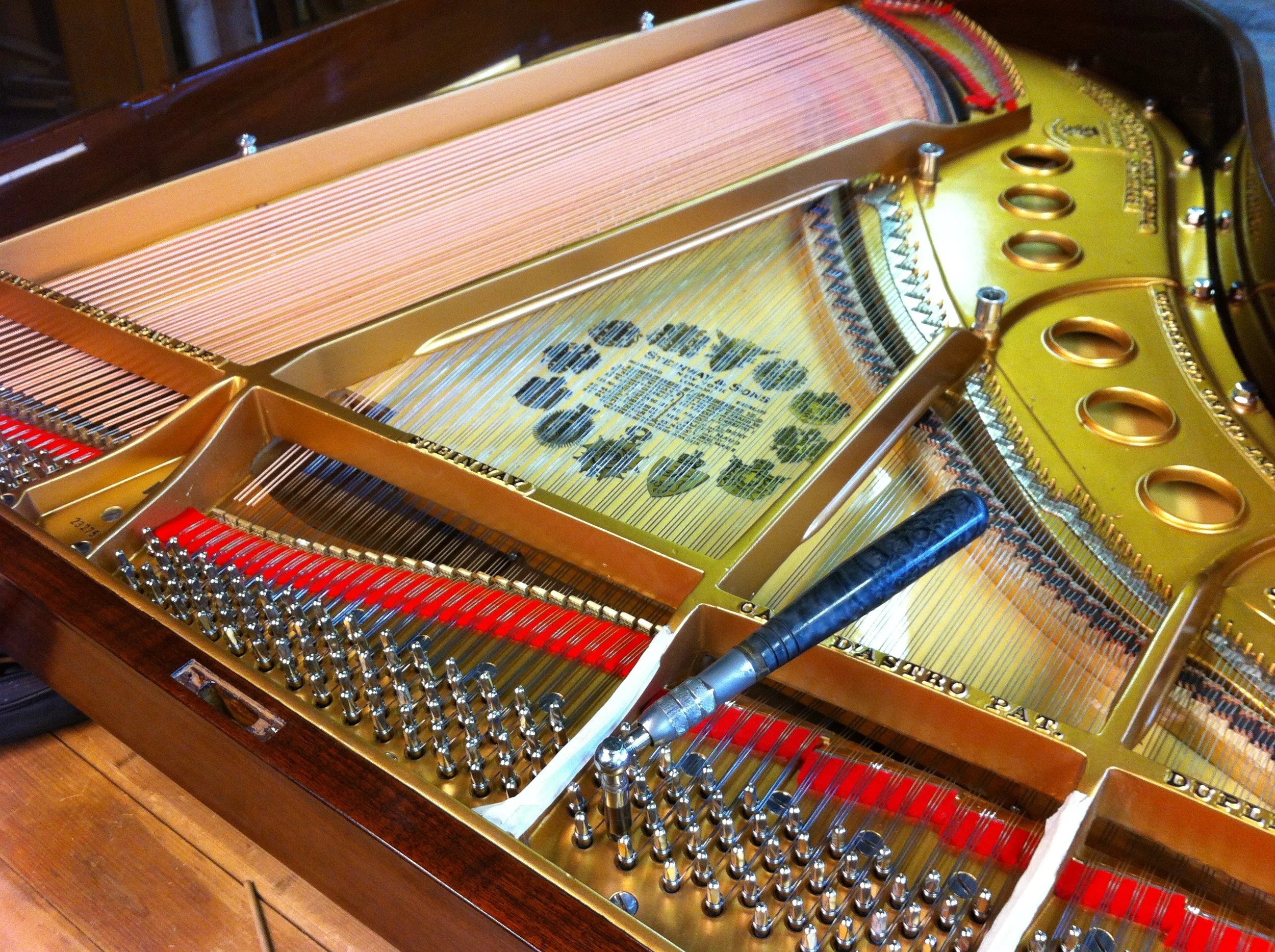To Tune or Not to Tune: This is the Answer
First of all - what is “tuning”? “Tuning” is merely an adjustment of the strings and pitch so that the piano becomes “in tune”; just like tuning any other instrument except for the fact that the tuner needs to check, correct and adjust over 250 strings and the tension from these strings measures over a ten tons!
There are many factors involved in the maintenance of pianos through tuning; some of which are:
1) Geographical Location
2) Room Location
3) Usage
4) Condition
5) Frequency of Tunings
6) The Person Playing it
7) The Tuner
1) In the Northeastern United States, temperature and humidity changes usually necessitate a minimum of twice per year.
2) A piano placed next to a heat source, air conditioner or open window can usually go out of tune quicker than one not so positioned.
3) Usually, the more you play, the more frequently the strings will need adjustment.
4) If a piano has loose tuning pins, has too much tension after rebuilding (not everyone knows what they are doing) or some other mechanical situation that needs attention, its ability to hold a tuning or even take to one will be lessened.
5) A piano that is tuned regularly will be prevented from going out of tune too far, need less adjustment and will therefore hold a tuning better. The more the pitch has to be raised, the faster it will drop again.
6) Each piano owner will have different ears, different needs and different opinions on what can be tolerated before they consider another tuning. Even slight out of tune-ness makes the piano loose its beautiful harmonics and singing tone.
7) Some tuners are better than others. Some have tuned tens of thousands of pianos and have learned through experience. I have found that a great tuner, tuning by ear, is better than any tuner using a machine.
Many times I am tuning a piano in someone’s home and I see a guitar or a violin, etc. If the customer asks “How often should I tune my piano?” I often ask them how often do they tune that I other instrument. The answer is usually “Every time I pick it up.” And although it’s not feasible or economical to have your piano tuned every time you sit down to play, most people don’t have it done often enough.
To Tune or Not to Tune?
Tips for the care of your piano
Your piano is basically a machine like a car or a computer, but with the capability of allowing someone to create music. All machines need to be properly maintained or they will eventually break down.
Importance of proper maintenance
We recommend tuning at least twice a year (due to climatic changes) and regulating ever 3-10 years based on use. Pianos such as old Steinways, Mason & Hamlins and Baldwins are worth the time and money to completely rebuild and refinish as these instruments are of much richer sound than new pianos.
"Tuning" and "pitch raising" as opposed to "regulation"
"Tuning" is the turning of the tuning pins and thereby tightening of the strings, to raise or lower the pitch of the piano. When the wood of the piano shrinks or expands, the pitch will rise or drop. Therefore tuning corrects these changes. If the tuning pins of the piano are lose, the pins will shift quicker and the piano will go out of tune drastically. A "pitch raise" is when the piano has dropped in pitch significantly or when the piano has not been tuned in quite some time and has dropped in pitch from tension above. There is an extra charge beyond simple tuning for a pitch raise since it involves more work.
"Regulation" involves adjusting the many moving "action" parts (keys, hammers, etc.) inside the piano so that they work properly with each other to give you the best tune and feel possible. This procedure can sometimes take many hours to complete but is only necessary every 2-10 years, based on the piano and the amount of playing. Minor action regulation can be done more frequently for the more seasoned pianists.
If you're now wondering if your piano needs some work, contact us today!





